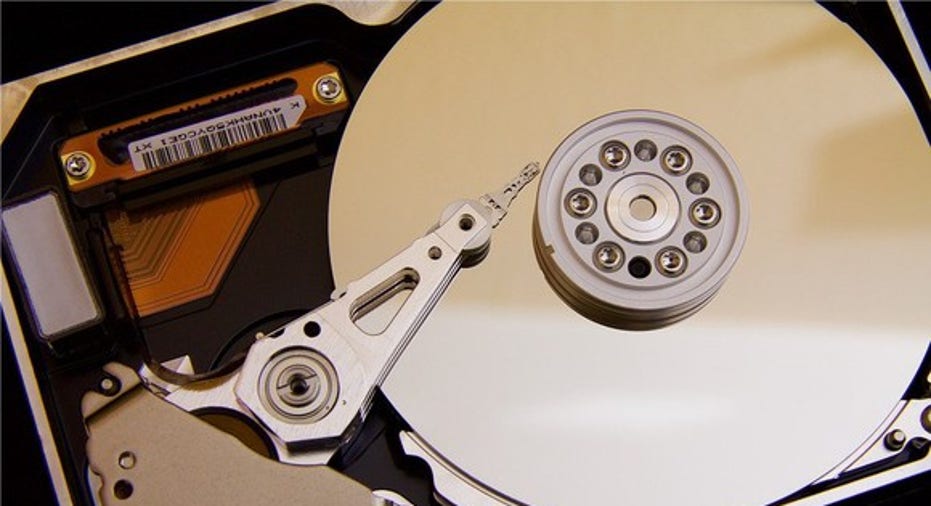3 Tech Stocks That Turned $10,000 Into $200,000

If you have $10,000 to invest, most financial advisors will probably tell youto put the cash in an index fund which tracks the overall market. That's because it's considered too risky to put all your savings in a single stock, but buying three to five stocks might not create a well-diversified portfolio.
Image source: Getty Images.
But if you have $10,000 that you can afford to lose, you might consider investing in a few riskier, high-growth plays which could crush the S&P 500 over the long run. Let's look at three tech stocks that turned $10,000 into $200,000 or more in just over a decade -- Alphabet (NASDAQ: GOOG) (NASDAQ: GOOGL), Western Digital (NASDAQ: WDC), and salesforce.com (NYSE: CRM).
Alphabet
Alphabet, the company formerly known as Google, went public in 2004 for $85 per share. Your $10,000 would have been enough to buy 117 shares. The company then did a share spin-off in 2014 that had a similar impact as a 2-for-1 split.
You would then have 117 shares of Google's Class A (voting) stock and 117 shares of the new Class C (non-voting) shares. At today's prices, those 234 shares of Class A and C shares would be worth about $182,000. When both classes hit historic highs in late October, your investment would have been worth about $193,000.
Staying invested in Google required confidence in its ability to evolve from a high-growth search engine with a triple-digit P/E ratio into a diversified tech giant. It gradually accomplished this by expanding its ecosystem with Maps, YouTube, Drive, Chrome, Android, and other platforms. By offering those cloud-based apps, services, and operating systems for free, Google created the perfect funnel to gather customer data for its targeted ads. That move turned Google into the 800-pound gorilla of internet ads.
Western Digital
Hard-drive maker Western Digital, which went public in 1978, generally isn't known as a high-growth stock. But if you had spent $10,000 to buy 4,098 shares of WD in December 2000 during the nadir of the dot-com crash, you would be sitting on over $235,000 today. Moreover, your investment would be paying you nearly $8,200 in dividends every year.
Image source: Pixabay.
Western Digital bounced back from the dot-com crash because it was the still the market leader in hard disk drives (HDDs), and the growth of the PC market and expansion of data centers ensured that orders would keep coming in. But in recent years, the HDD market was hit hard by a slowdown in PC sales, weaker enterprise spending, and the rise of flash-based solid-state drives (SSDs).
SSDs are pricier, but they're faster, smaller, more power-efficient, and less prone to damage than HDDs. This makes them a much more popular choice for high-end tablets, 2-in-1 devices, and ultrabooks. To stay relevant, WD acquired flash memory and SSD maker SanDisk earlier this year in a $16 billion deal. WD's 55% rebound over the past six months suggests that investors believe that warming PC sales and the SanDisk acquisition could breathe fresh life into this aging tech giant.
Salesforce
Salesforce, the market leader in cloud-based customer relationship management (CRM) solutions, went public in 2004 for $11 per share. Your $10,000 would have been enough to buy 909 shares. After undergoing a 4-for-1 split in 2013, those3,636 shares would be worth over $275,000 today.
Salesforce built its entire business on CRM solutions that were easily scalable as subscription-based cloud services. Its first-mover's advantage in that market helped it claim 19.7% of the global CRM marketin 2015, according to Gartner. That put it well ahead of rivals such as SAP, Oracle, Microsoft, and Adobe. Salesforce also posted the highest year-over-year market share gain of those five market leaders.
Salesforce has a strong record of double-digit sales growth, but its bottom line growth is weaker. The company is consistently profitable ona non-GAAP basis, but its GAAP earnings only occasionally stay in the black on a quarterly basis. Looking ahead, Salesforce also faces tough questions about its high valuations (234 times earnings and 7 times sales), as well as new CRM challenges presented byMicrosoft's purchase of LinkedIn.
The key takeaway
Investing in Alphabet, Western Digital, and Salesforce at the right time took a lot of guts, patience, and luck. While it should be very tough to find the next stock that could turn $10,000 into over $200,000, investors should keep an eye out for promising plays that could generate massive returns in just one or two decades.
A secret billion-dollar stock opportunity The world's biggest tech company forgot to show you something, but a few Wall Street analysts and the Fool didn't miss a beat: There's a small company that's powering their brand-new gadgets and the coming revolution in technology. And we think its stock price has nearly unlimited room to run for early in-the-know investors! To be one of them, just click here.
Suzanne Frey, an executive at Alphabet, is a member of The Motley Fool's board of directors. Leo Sun owns shares of Salesforce.com. The Motley Fool owns shares of and recommends Alphabet (A shares), Alphabet (C shares), and Gartner. The Motley Fool owns shares of LinkedIn, Microsoft, Oracle, and Western Digital. The Motley Fool recommends Adobe Systems and Salesforce.com. Try any of our Foolish newsletter services free for 30 days. We Fools may not all hold the same opinions, but we all believe that considering a diverse range of insights makes us better investors. The Motley Fool has a disclosure policy.